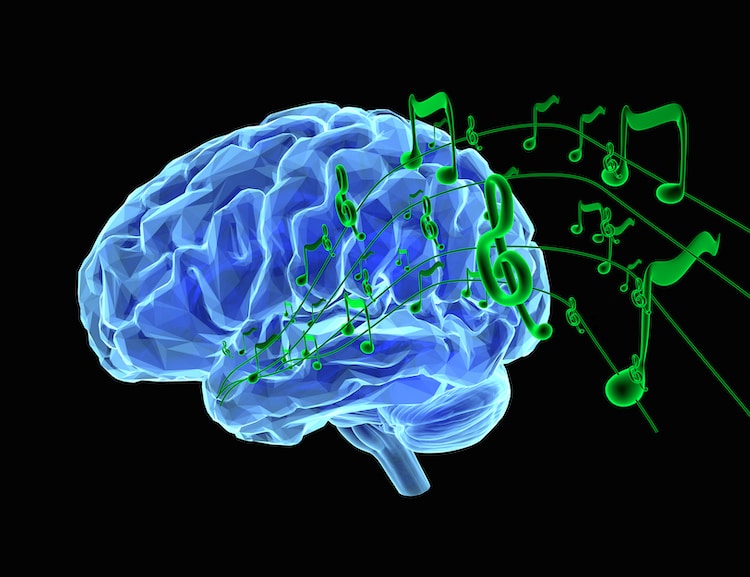
Photo: ingridat/Depositphotos
Sometimes you listen to a song and can’t get it out of your head for hours. A new study shows that scientists are developing the technology to decode similar brain activity. While not perfect yet, it already has the ability to reconstruct songs that people are listening to with impressive accuracy.
In the study, scientists at the University of California, Berkeley looked at the brain activity of 29 people with epilepsy, all of whom had electrodes currently implanted in their brains. The subjects listened to the Pink Floyd 1979 song “Another Brink in the Wall” while neuroscientist Ludovic Bellier and colleagues monitored their brain signals. As the music played, the researchers observed nerve cells in the brain responding to lyrics, rhythm, and harmony. Afterward, they used artificial intelligence to decode the data and produce a copy of the song.
“Music is a core part of human experience,” says Bellier. “Understanding how the brain processes music can really tell us about human nature. You can go to a country and not understand the language, but be able to enjoy the music.” Through this study, he and his team found that an area in the superior temporal gyrus of the brain (STG), which is located behind and above the ear, showed more activity when the guitar is played, and a completely different part of the STG lit up during the vocals of the singers. They also had visual evidence that the right side of the brain is indeed more musically inclined than the left side, which is more associated with language.
The results from this study can have broader implications as well. The hope is that by using similar brain recording techniques, scientists can develop a way for people who cannot speak or move due to stroke or paralysis to communicate with more expressiveness and musicality. While there is already a machine that can do this to some degree—Stephen Hawking used a speech-generating device, for instance–it has a robotic quality. “Right now, the technology is more like a keyboard for the mind,” Bellier explains. “You can’t read your thoughts from a keyboard. You need to push the buttons.”
Although there is a long way to go, this study shows promise for better understanding the brain and helping people with limitations better communicate.
Scientists were able to reconstruct a Pink Floyd song based on the brain signals of listeners.

Neuroscientists recorded electrical activity from areas of the brain (yellow and red dots) as patients listened to a 3-minute snippet of the Pink Floyd song, “Another Brick in the Wall, Part 1.” Using artificial intelligence software, they were able to reconstruct the song from the brain recordings. This is the first time a song has been reconstructed from intracranial electroencephalography recordings. (Photo: Ludovic Bellier and Robert Knight, UC Berkeley, CC BY 4.0)
h/t: [IFL Science]
Related Articles:
Researchers Say Short Daytime Naps May Support Brain Health
Scientists Use Brain Implants to Help Patients Regain Their Independence
Study Says Pets May Protect Your Brain’s Cognitive Processing as You Age
